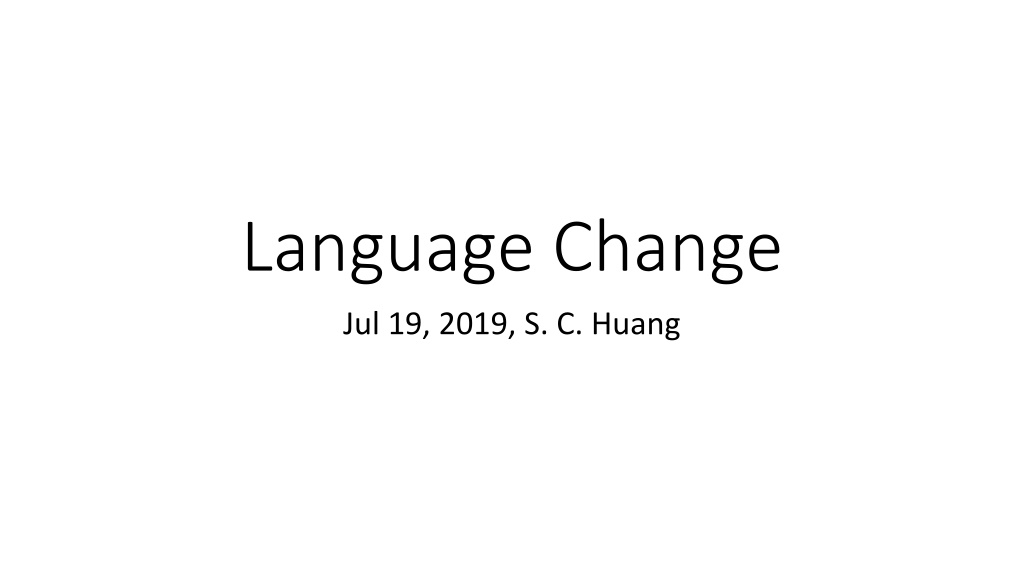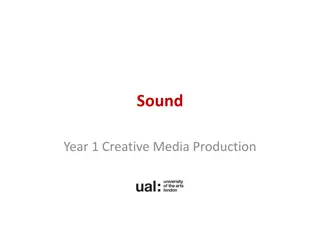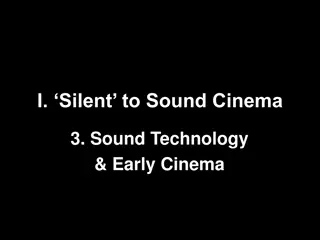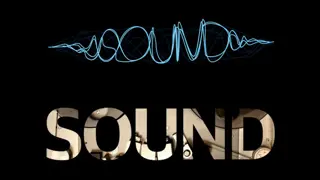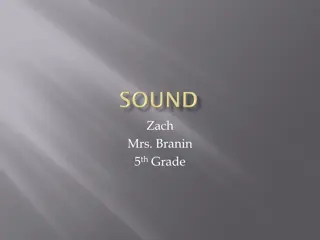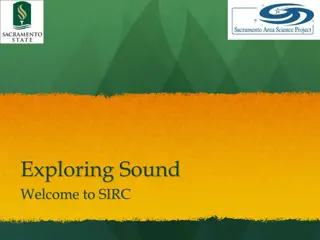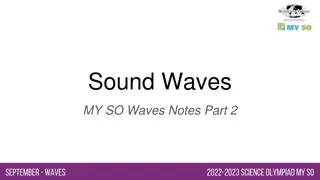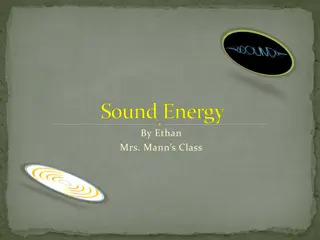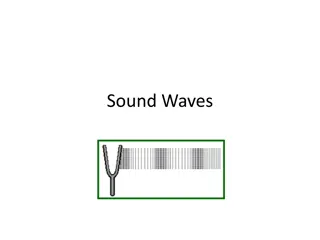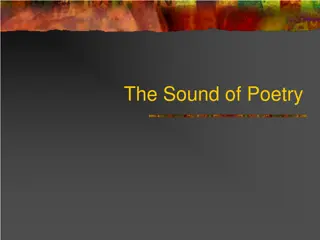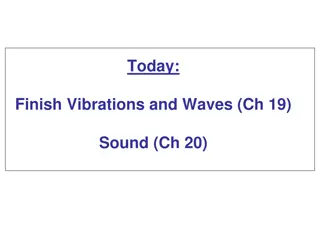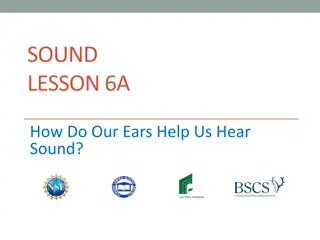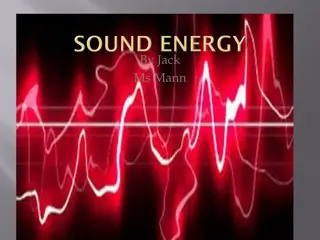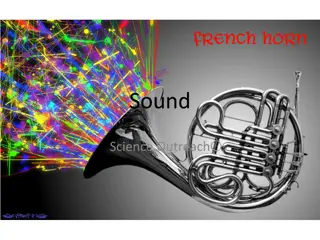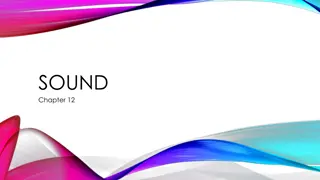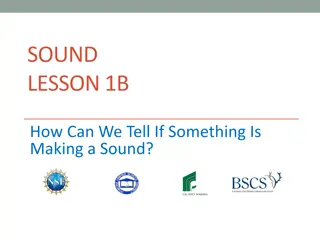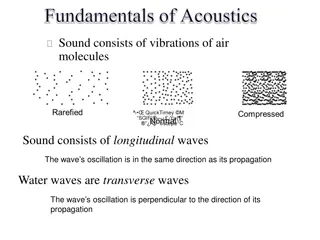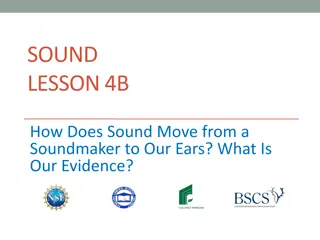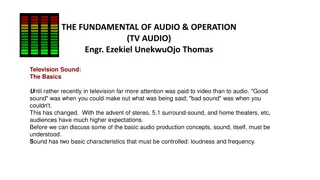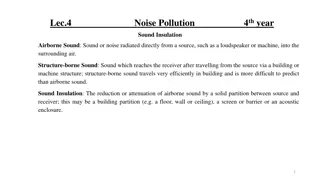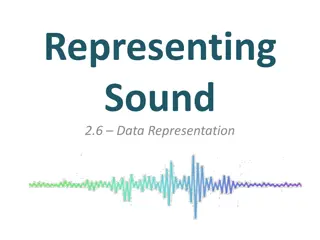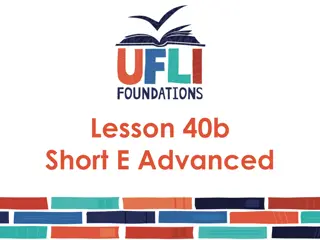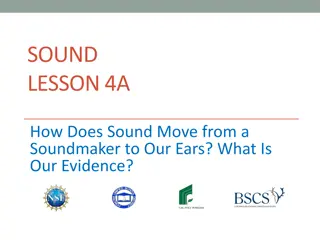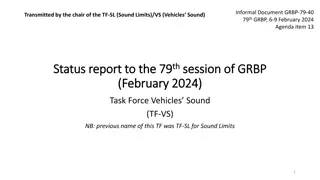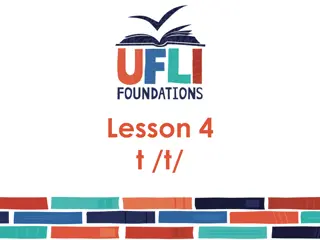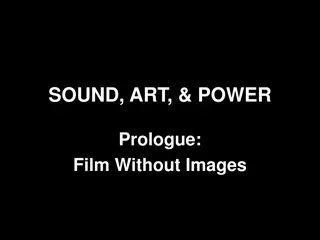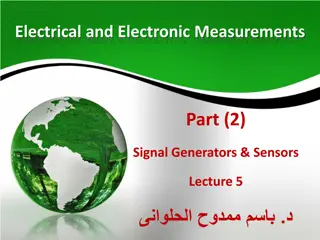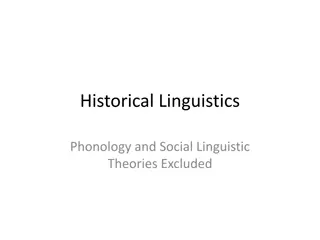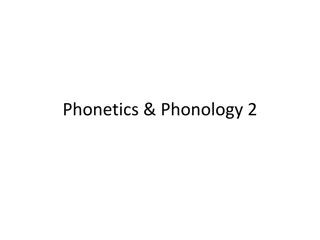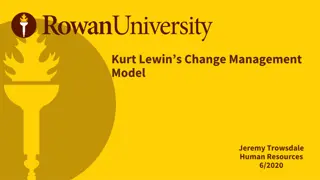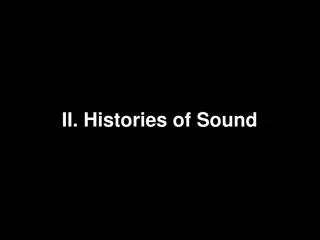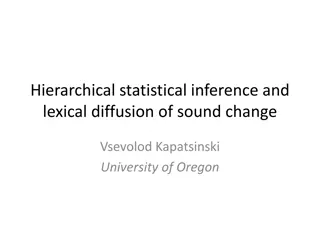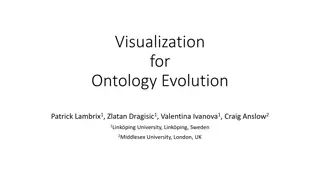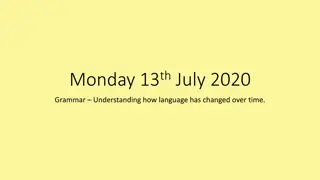Understanding Language Change and Sound Evolution
Explore the processes and examples of language change, including sound alterations, observed notations, reconstruction methods, and the regularity of sound changes. Discover how linguists analyze conditioned changes, assimilation, and the neogrammarian model to track linguistic evolution.
Download Presentation

Please find below an Image/Link to download the presentation.
The content on the website is provided AS IS for your information and personal use only. It may not be sold, licensed, or shared on other websites without obtaining consent from the author. Download presentation by click this link. If you encounter any issues during the download, it is possible that the publisher has removed the file from their server.
E N D
Presentation Transcript
Language Change Jul 19, 2019, S. C. Huang
Outline Sound Change Observation Notation Knowledge Comparative Reconstruction Internal Reconstruction Alternation Split of paradigm
How do we know? Direct attestation Conservative aspects of a language Orthography, esp. the language has a long written history Marginal forms, irregular forms Reconstruction Internal reconstruction Comparative reconstruction
The Neogrammarian Model Sound change is regular Sound change has no memory Sound change ignores grammar Sound change is inevitable
Sound Change is Regular /ma t / /me t/ /na m / /ne m/ /wa st / /we st/ /ka k / /ke k/ /na p / /ne p/
Notation for this change a > e >
The Great Vowel Shift Source: https://en.wikipedia.org/wiki/File:Great_Vowel_Shift2c.svg
Another Example /'kane / /'kane/ /'kentu / /'t nto/ /'kawu / /'kavo/ /'kerwu / /'t rvo/ /'kibu / /'t ibo/ /ki'wilis/ /t i'vile/ /'kollu / /'k llo/ /'korpus/ /'k rpo/ /ku'kulus/ /ku'kulo/
Conditioned Change k > t / _[+front] There are many other changes in the example. How many did you see? (some are conditioned, and some are unconditioned)
Assimilation Adjacent segments will have similar features Special types of Assimilation: Ablaut Vowel Harmony Final devoicing
Ablaut & Harmony Ablaut Harmony /fo ts/ /fo t/ /fo tiz/ /fe t/ /mu s/ /mu s/ /mu siz/ /mi s/ /ri ki/ /ri ki/ /kv i/ /kv e/ /ur u/ /ur u/ /na mu/ /na mo/
Lenition /ka'pere/ /ka' er/ /'lupa/ /'lo a/ /'mappa/ /'mapa/ /'statu / /es'ta o/ /'wi ta/ /'bi a/ /'gutta/ /'gota/ /lo'kare/ /lo' ar/ /a'ku tu / /a' u o/ /'wakka/ /'baka/ /'ak a/ /'a wa/
Transphonologization Compensatory Lengthening <igh> /ix/ /i / /a / Nasalization Tonogenesis
Multiple Changes /'wul z/ /'wulf/ /'wul o s/ /'wulv s/ /'ho z/ /'ho f/ /'ho o s/ /'ho v s/ /'hl i z/ /'hl f/ /'hl i o s/ /'hl v s/
The Order of Changes z > / _# { , } > f / _# { , } > v / _ What if the order of the sound changes is reversed?
Suprasegmental Change wsoh wsoh wsesi wsesi wseti wseti wsowe ews we wsome ews me
When sound change seems irregular tr yes r z tu d k m t tehun d ewbn s deupaz p ds f t b r h ter br r
Exception? n k ts nahts ok t w aht u steh d om st d
Exception? p te r fad r k m t m hund wseti kiusidi
Lang S Lang P Lang R Lang S Lang P Lang R /greh/ /beda/ /peta/ /zet/ /vol/ /rod/ /sol/ /gr ex/ /b eda/ /p ta/ /z t / /vuw/ /rud/ /sul/ /gr ex/ /b eda/ /p ata/ /z at / /vol/ /rod/ /sol / /oko/ /noga/ /gos/ /roka/ /kura/ /orel/ /pes/ /oko/ /noga/ /g s / /r ka/ /kura/ /or ew/ /or ol/ /p es/ /oko/ /noga/ /gus / /ruka/ /kura/ /p os/
Synchronic clues of diachronic change Irregularity of morphology Alternation Allomorph Similarity between paradigms Conservative aspects of language Similarity between languages
Alternation /ple ps/ - /ple bis/ /urps/ - /urbis/ /daps/ - /dapis/ /ops/ - /opis/ /re ks/ - /re gis/ /striks/ - /strigis/ /kalks/ - /kalkis/ /kruks/ - /krukis/
Alternation nature natural sane sanity serene serenity divine divinity school scholarly profound profundity provoke provocative
Alternation /ka'tav/ - /jix'tov/ /za'xa / - /jiz'ko / /ba'dak/ - /jiv'dok/ /sa'val/ - /jis'bol/ /pa' al/ - /jif' al/ /ka'fal/ - /jix'pol/ /xa'faf/ - /jax'pof/ /xa'laf/ - /jaxa'laf/ /ha'ras/ - /jaha'ras/ /ha'fax/ - /jah'pox/
Split of Paradigm /'p s/ - /'ps / /'s n/ - /'sn / /'k w/ - /'kw / /'w p/ - /'wb / /'rut/ - /'r d / /'mur/ - /'m r / /'vus/ - /'v z / /'sat/ - /'sad / /'var/ - /'var / /'lis/ - /'lis / /' m x/ - /' m x / /'l p/ - /'l p / /'xl p/ - /'xl b / /'dux/ - /'dux / /'lud/ - /'lud / /'brut/ - /'brud /
A Famous Example /b er-/ - /b e r-/ - /b r -/ /d e -/ - /d e -/ - /d -/ /ter -/ - /te r -/ - /tr -/
However Regular sound change causes morphological irregularity! Levelling: eliminating of alternation Old English: c ozan c as curon gecoren Modern English: choose chose chosen Analogy: Old English: s o an s a sudon gesoden Modern English: seethe seethed seethed
